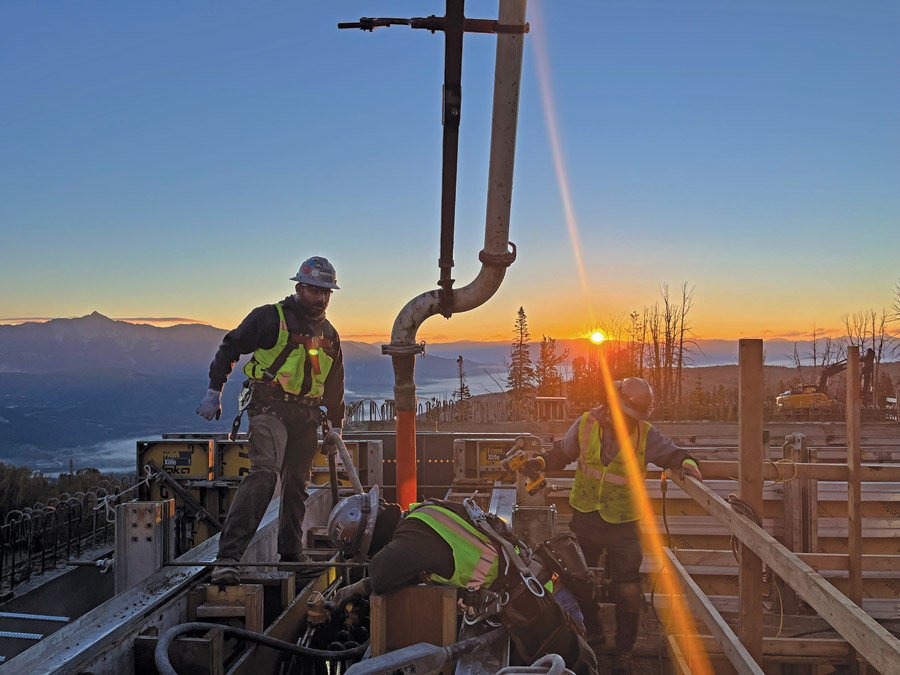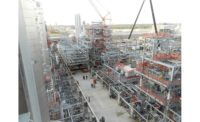BIG SKY TRAM DOCK
Big Sky, Montana
BEST PROJECT, SPECIALTY CONSTRUCTION, and EXCELLENCE IN SAFETY
Submitted by: Baker Construction
OWNER Big Sky Resort
LEAD DESIGN FIRM GSBS Architects
GENERAL CONTRACTOR Jackson Contractor Group
CIVIL ENGINEER Gaston Engineering & Surveying
STRUCTURAL ENGINEER Arup
CONCRETE CONTRACTOR Baker Construction
A year-round immersive experience now awaits visitors at Lone Peak following the completion of the Big Sky Tram in October 2023, allowing guests to admire the snow-covered landscape in winter and enjoy lush greenery during the summer. The tram dock functions as both a boarding and unloading station and was designed to efficiently handle large numbers of people and their equipment, such as skis, snowboards and poles. To enhance visitor comfort, especially in adverse weather conditions, the dock area includes an enclosed waiting area, protecting passengers from the elements while they wait to board.
Site access was one of the most significant challenges facing the team as there are no conventional or mountain access roads available to get to the project site. In snowy conditions, the team needed snowmobiles to transport crews up and down the mountain.

Photo courtesy Garaventa
One of the most significant dilemmas was coming up with a way to get concrete up to the top of the mountain without using trucks. The solution was a helicopter equipped with a bucket attachment. However, this approach resulted in its own complications due to freezing temperatures, which jeopardized the concrete’s integrity. Windy conditions at the summit posed further difficulties, particularly during concrete placement, when controlling the concrete bucket from the helicopter became challenging. To mitigate this issue, the team employed a smaller helicopter and concrete bucket, enhancing control and precision during the pouring process.
A comprehensive job hazard analysis (JHA) was tailored to the unique task of placing concrete with a helicopter. This process helped the team identify potential hazards and outline protocols to mitigate risks associated with the operation. Following a near-miss episode where communication difficulties arose between the helicopter crew and ground personnel during placement, a revised JHA was created to address communication challenges and enhance protocols. The team held multiple meetings with the helicopter company, pilot, project owner and general contractor. Across 20,627 worker hours, the team reported zero OSHA recordable incidents and no lost-time accidents.




